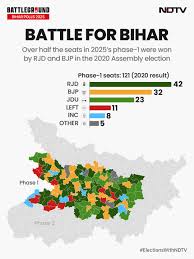Bihar Election Result 2023: Key Outcomes and Analysis

Introduction
The Bihar Election Result 2023 has significant implications for state politics and governance. As one of India’s most politically dynamic states, the outcome of these elections is crucial not only for the local populace but also for national political strategies. Bihar, with its rich political history, often reflects broader trends in Indian politics, making the 2023 elections a crucial event for understanding the evolving landscape.
Election Overview
The elections, conducted on October 15, 2023, saw a voter turnout of approximately 60%. This represented a slight deduction from the previous elections, which indicated voters’ increasing engagement issues. Key parties contesting the elections included the Rashtriya Janata Dal (RJD), Janata Dal (United) [JD(U)], Bharatiya Janata Party (BJP), and the Indian National Congress (INC), each vying for a majority in the 243-member Bihar Legislative Assembly.
Results and Political Landscape
As the results were declared, the RJD emerged as the single largest party, securing 90 seats, followed closely by the BJP with 80 seats. The JD(U) faced a significant setback, winning only 40 seats, while the INC managed to secure 30 seats. The overall picture reveals a shift in voter sentiment, predominantly driven by economic issues, caste dynamics, and promises of social justice.
Implications of the Result
This election result is likely to reinforce the RJD’s position as a leading political force in Bihar. Tejashwi Yadav, the RJD leader, has expressed intentions to address unemployment and infrastructure deficits while ensuring social welfare programs reach the intended beneficiaries. On the other hand, the BJP will need to reassess its strategy in the region, potentially reflecting broader trends in regional party dominance and coalition politics.
Conclusion
The 2023 Bihar Election Result marks a pivotal moment in the state’s political narrative. With the RJD’s resurgence, the implications for governance and policy-making could be significant. As Bihar grapples with challenges such as poverty, education, and healthcare, the new government will be under pressure to deliver meaningful change. Observers will be keenly watching how these results will shape future elections and policies both in Bihar and across India. The outcome reinforces the continual evolution of political alliances and voter priorities in response to economic and social challenges.









